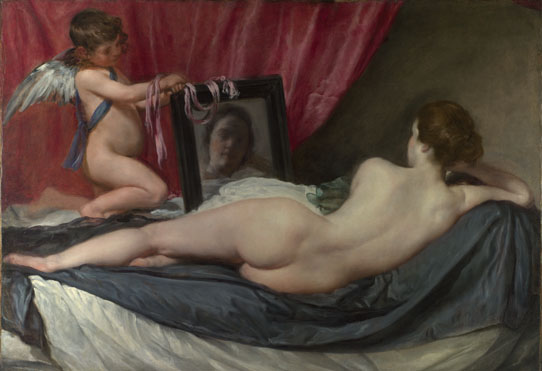Art & Exhibitions
New Scholarship Points to Secret Symbolism in Velázquez Paintings


Daria Daniel

The Grand Palais in Paris has mounted an ambitious Diego Velázquez exhibition, and, according to a French critic, it’s riddled with distinctive ambiguities.
The bulk of the Spanish master’s paintings reside in the collection at the Prado Museum in Madrid. Velázquez’ masterworks like Las Meninas, The Surrender of Breda, and Las Hilanderas do not leave the institution. Despite these limitations, the Grand Palais has pulled off a substantive exhibition by pairing works by the master with canvases by the artist’s mentor, Francisco Pacheco, and disciples, referred to as “Velazquenos.”
Writing for French Journal Le Monde, art critic Philippe Dagen takes a closer look at the paintings on display and notes subtle discrepancies.
He studies one simple painting, depicting a young woman holding up a piece of paper in her right hand. Though it appears to be a piece of paper, Dagen posits that, since there is no inscription on it, it could also be a canvas. He offers that, if this is the case, the brunette could easily function as an allegory for painting itself.
This hypothesis is supported by some Velázquez scholars, though others profess to recognize Clio, the muse of history or even a sibyl. While there is no clear consensus, the portrait is also seen by some as merely a study for Las Hilanderas.
The woman’s physical attributes are also enigmatic: the cloth around her appears translucent, the shadow below her hand is too faint, and Velázquez has inexplicably adorned her forearm with a fine rosy curve. Many of these touches boast no artistic precedent or influence. The same can also be said of the blurred face in The Toilet of Venus and the hallowed eyes in Cabeza de apóstol.

Diego Velázquez, Cabeza de apóstol (1619-1620).
Photo: museodelprado.es
Dagen affirms that part of Velázquez’ genius lay in leaving subject and meaning ambiguous, inviting multiple interpretations, in the same way he does with Las Meninas.
Velázquez at the Grand Palais is on view until July 13.